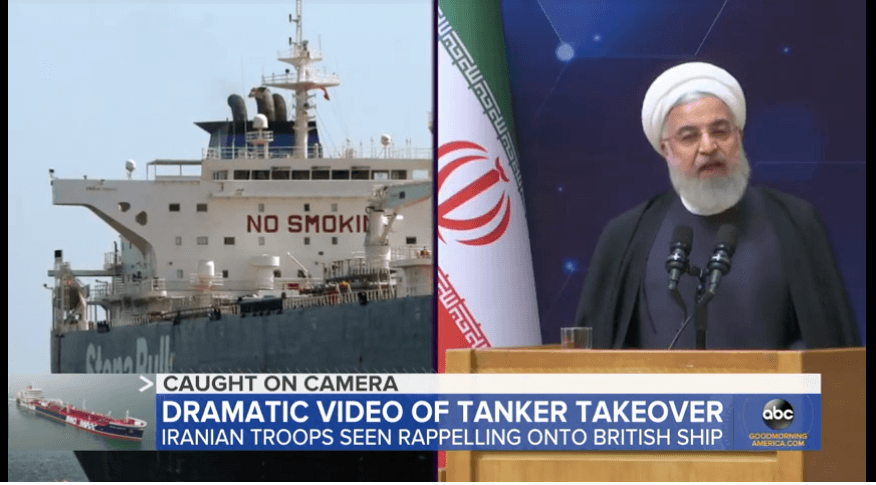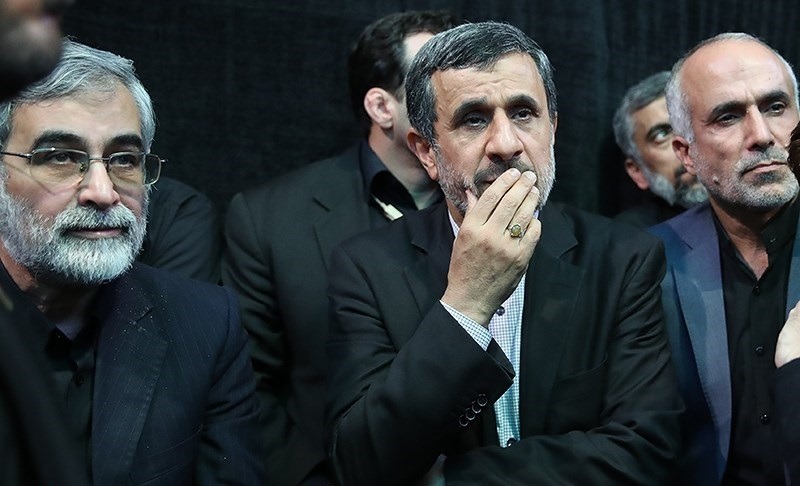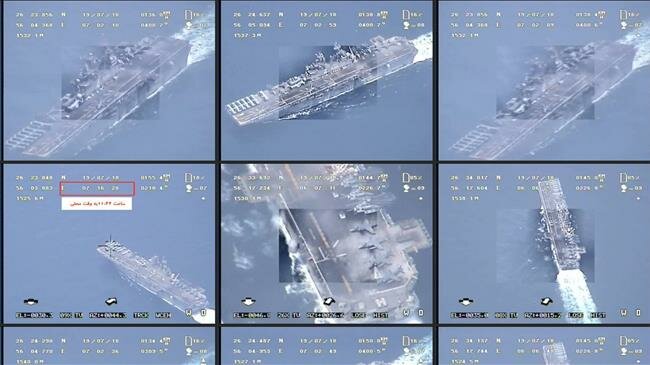For a Peaceful and United Korea
 Opeds
Opeds
George Burchett
[dropcap]I [/dropcap]have watched live on TV all three meetings between Chairman Kim Jong Un and President Donald Trump: the first one in Singapore on June 12, 2018, the second one in Hanoi (where I live) on 27-28 February 2019, and the last one at the DMZ on June 30, 2019.
All three meetings were moments of great hope and cause for cautious optimism.
But every time, I am also reminded of what President Kim Il Sung – Chairman Kim Jong Un’s grandfather – told my father, Australian journalist Wilfred Burchett in Pyongyang, when they first met there in May 1967. This is how my father relates it in his book Again Korea:
“Come and visit us again,” said my host. “Bring your wife and have a good holiday here. But I advise you to come soon if you want to see our country as it is now.” He waved his hand toward the window which looked out on a broad, tree-lined boulevard of shining new apartment houses and shops. “It is possible that all this will be destroyed if war breaks out. I say to my comrades that they should not think they can keep our nice theaters and things as they are now; they must realize that as long as imperialism exists, war may break out again. Especially as long as the unification of our country has not been achieved, things may be destroyed again.” My host was Premier Kim II Sung of North Korea, the place Pyongyang, the date May 20, 1967. (Wilfred Burchett, Again Korea, 1969)
I note that President Kim Il Sung didn’t specify which “imperialism” when he warned “that as long as imperialism exists, war may break out again”. He was well placed to know a thing or two about imperialism, having successfully fought Japanese imperialists occupying Korea and Yankee imperialists and their lackeys trying to annihilate North Korea, occupying South Korea and keeping the Korean Peninsula divided to this day.
From the rubble left by the Korean War, the people of the DPRK, under the leadership of President Kim Il Sung, built an advanced and prosperous socialist state. Since its inception, that socialist state, the Democratic People’s Republic of Korea, has had US nuclear weapons pointed at it from the South and has been under constant threat of annihilation. Let’s not forget that prior to the historic Singapore meeting, Donald Trump was also threatening North Korea with “fire and fury” if it didn’t comply with US diktats.
On 13 April 2012, together with delegates from many countries, I had the privilege of visiting Mount Paektu, on the occasion of the 100th Anniversary of President Kim Il Sung’s birth. The scenery is breathtaking. To make it even more dramatic, we were treated to a real snow storm, to remind us of the extraordinarily harsh conditions under which President Kim Il Sung and his companions fought their heroic war or resistance against Japanese imperialists and their local collaborators.
Two days later, on 15 April 2012, I was on Kim Il Sung Square watching the military parade to celebrate the 100th Anniversary of President Kim Il Sung’s birth. I was standing next to our interpreter, the diminutive and always elegant Miss Liu. She had told me earlier that she had done her military service with an artillery unit. As the big guns were paraded before us, I kept asking her: Were you with this unit? Finally some really, really big guns appeared and I asked her again: These ones? And she said: Yes! Which makes me wonder, how many Miss Lius are ready to man those big guns in defense of their socialist motherland, inspired by the heroic example of the generation of revolutionaries led by President Kim Il Sung?
On that same occasion, Chairman Kim Jong Un made his first public speech. It was a moment of great and palpable emotion for the people gathered at the square and, no doubt, for all North Koreans, who for the first time heard the voice of their young new leader.
Today, Chairman Kim Jong Un is hailed even by the President of the United States of America as a great and wise leader of his people and a personal friend. Who would have believed that back in 2012? Not many, I’m sure.
I first visited the DPRK in September 2002 with my son Graham. We arrived from Sydney, Australia, where we were living at the time. I must confess that I was a little bit apprehensive. I had lived in Australia since 1985 and had had to endure an endless and sustained demonization campaign against my father, Wilfred Burchett. He was never forgiven by the Australian establishment and its media etc. enforcers for reporting the ceasefire talks to end the Korean War from the North Korean-Chinese side. Some still denounce him as a “moral traitor to western civilisation”. For good measure, he had also reported the Vietnam war from the “communist” side. Australia had fought in both wars alongside the US. But this is another story…
In 2002, when my son and I visited, the DPRK was emerging from a period of extreme hardship due to a combination of adverse factors. But when we were there, there was also great hope for normalising relations with the US and Japan. Former US Secretary of State Madeleine Albright had visited the DPRK and had spoken favourably of Chairman Kim Jong Il. Japan’s Prime Minister Koizumi was also expected to visit Pyongyang to normalise relations between the two countries. President Kim Dae-jung of South Korea was pursuing his Sunshine Policy of détente with North Korea. Then George W Bush declared North Korea as part of his “axis of evil” and relations went into deep freeze again. A “deep freeze” that has lasted pretty much until the June 2018 historic summit between Chairman Kim Jong Un and President Donald Trump.
So, three generations of DPRK leaders have had to confront “imperialism”: Kim Il Sung, Kim Jong Il and Kim Jong Un.
Only President Kim Il Sung had to fight militarily Japanese and US imperialisms. He did so successfully, for all of Korea, North and South. One would hope that both imperialisms would draw some useful lessons from their defeats. But I’m afraid that remains hopeful thinking. If history teaches us anything, it is that imperialism feeds on war and destruction, like vampires feed on blood. Lenin wrote in 1917: imperialism is the highest stage of capitalism. And history proves him right.
Before concluding this essay I would like to quote again from my father’s book, Again Korea:
“Driving out homeward bound along the concrete highway leading to the airport, past Pyongyang’s gleaming buildings, the air heavy with the scent of acacia blossoms, admiring again the neat grey and white villages, the carefully tended fields already green with thickly planted rice, my thoughts could not but turn to Kim II Sung’s warning that it might all be destroyed again soon. I thought of the former head of America’s Strategic Air Command, General Curtis LeMay’s solution for Vietnam: “Let’s bomb ’em back into the Stone Age,” and realized how right Premier Kim is to prepare the country organizationally and psychologically for more destruction. But I also thought how wrong was LeMay. You can bomb the Vietnamese and Korean people underground, but you cannot bomb them back into the “Stone Age.” You cannot bomb out of existence those solid technical, intellectual and moral qualities they have acquired during the years of building and living under socialism. What stone age moralists such as LeMay would like to bomb out of existence is indestructible. If what has been built up in North Korea is destroyed again, the “abundant fruitful orchard” will grow faster than ever again. And the next time it will spread over the whole country.”
In 1992, Francis Fukuyama proclaimed “the end of history” and the triumph of free market “liberalism” over “collectivist” soviet-style state socialism. Almost three decades later, the DPRK proves him wrong. North Korea is still a proud socialist state that firmly stands its ground against threats from the self-proclaimed rulers of the world. Not only that, but suddenly “socialism” looks attractive again to Western societies facing increased economic hardship and inequality, social dysfunctionality, endless wars, terrorism and so on and on.
The world now looks at the DPRK with renewed respect. That respect is hard-earned thanks to the strong and wise leadership of President Kim Il Sung, Comrade Kim Jong Il and Chairman Kim Jong Un, who, in the most difficult circumstances, have been able to not only defend their country, but also guide it towards a bright and prosperous future.
All progressive and peace-loving people around the world can only sincerely wish that the near future will see Korea peacefully reunited and all Koreans joining forces to build a strong, proud, independent and prosperous Korea.
And if I may end on a personal note, I believe that only the people of Korea, by their common will and efforts can make that happen, despite every efforts by “imperialists” to keep them apart and in a constant state of conflict.
So all of us who support a united and peaceful Korea have a lot of work to do. There are now some glimmers of hope on the horizon, and we must make sure that the flame of hope keeps burning, brighter and brighter until it illuminates us all, like bright sunshine. This, I’m sure, would also be the wish of President Kim Il Sung and Comrade Kim Jong Il, who have past the baton to their grandson and son, Chairman Kim Jong Un, who only a few days ago, invited US President Donald Trump to step on North Korean territory, making him the first acting US president to step on North Korean soil. Let us hope that these few steps, lead to more firm steps towards Peace and Reunification.

This work is licensed under a Creative Commons Attribution-NonCommercial 4.0 International License
















